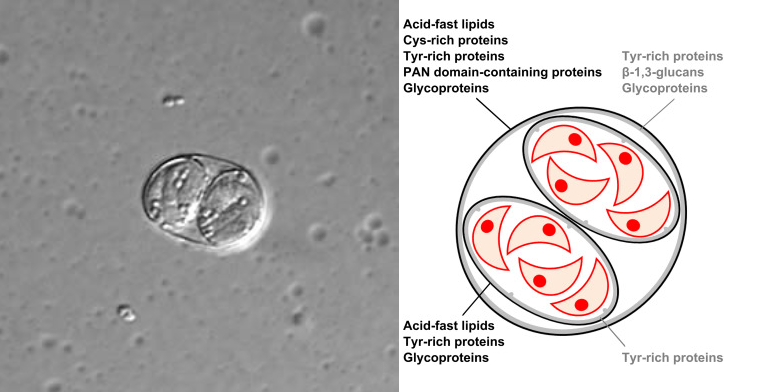A lot has been said about toxoplasmosis and the possibility of contracting it through coming into contact with domestic cat faeces. This has particular significance with respect to pregnant women.
Cats get toxoplasma infection by eating infected rodents, birds or other small animals. They can also get it by coming into contact with anything that is contaminated with faeces from another cat that is shedding this microscopic parasite in their faeces by way of oocysts.

After a cat has been affected it can shed the parasite for up to 2 weeks. In cats the oocysts develop in the intestines and are passed in their faeces. The faeces of infected cats present a health hazard to others. But these infective oocysts are only passed for a very short time after the cat has been exposed to the disease.
Critically, CDC in America tell me that “the parasite becomes infective 1-5 days after it is passed in the faeces. This tells me that at the earliest, one day after the feces have passed into a litter tray they become infective and at that point they present a hazard to a cat owner cleaning the litter tray.
On that basis, it makes sense, as recommended by CDC, to change a cat’s litter box every day. If you do that, on my reckoning, you highly unlikely to encounter infective toxoplasma gondii oocysts from handling the litter tray. This is my health tip of the day! 👌
I will add some more information. CDC also recommend feeding cats only canned or dried commercial foods or well-cooked meats. The reason behind this advice is that evidence strongly suggests that cats and people can get the disease from eating raw or undercooked pork, veal, mutton, beef or unpasteurised dairy products which contain toxoplasma organisms.

There is a disturbing article online today on the Medical News Today website. And the truth is that cat owners and cat lovers cannot brush the toxoplasmosis problem under the carpet. Cat haters always bring it up and cat lovers tend to brush it aside as relatively unimportant. I don’t think that it is unimportant. I think that it is a real problem in the cat-human relationship.
A research project indicates that when kids come into contact with the family cat, they have a greater risk of later-life mental illness. This is based on two studies in the journals Schizophrenia Research and Acta Psychiatrica Scandinavica.
They appear to have identified a link between children in homes with a family cat developing later life schizophrenia and other mental disorders. They state that “around 50% of individuals who had a cat as a family pet during childhood were diagnosed with schizophrenia or other mental illness later in life compared with 42% who did not have a cat during childhood.”
They are saying that there is an 8% increase in risk in developing mental health issues later in life if you live with the family cat when you’re a kid. That’s my interpretation.
I see this as a problem. It’s a potential negative set against the great benefits that domestic cat companionship brings to millions of people. The benefits clearly outweigh the detriments by a big margin but we can’t ignore these detriments and we should do things to minimise them and as suggested in today’s health tip. 😃
There are some more toxoplasmosis articles below.

